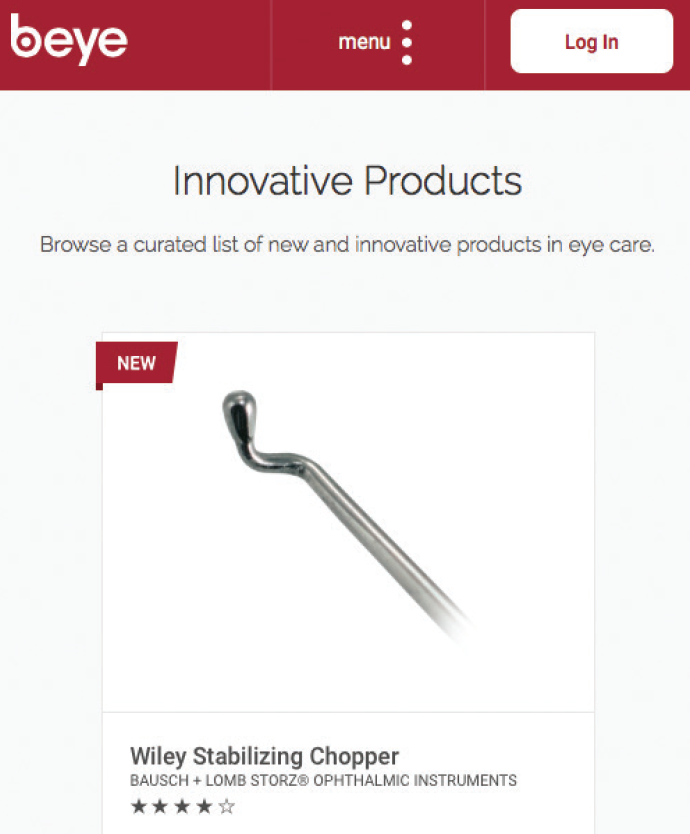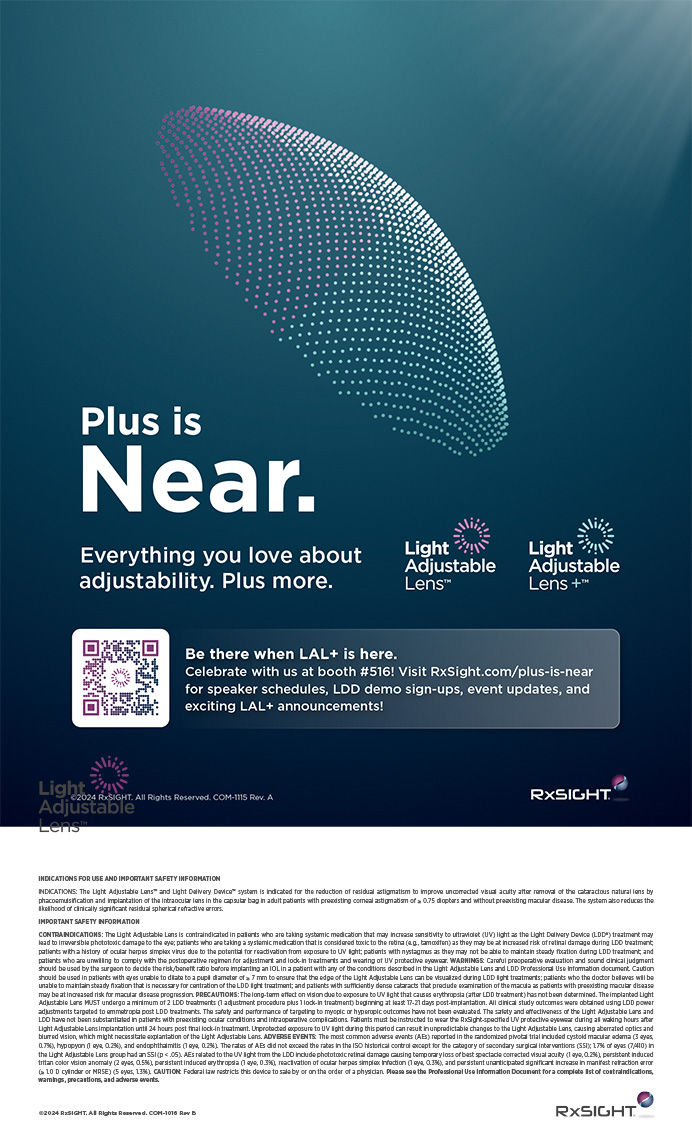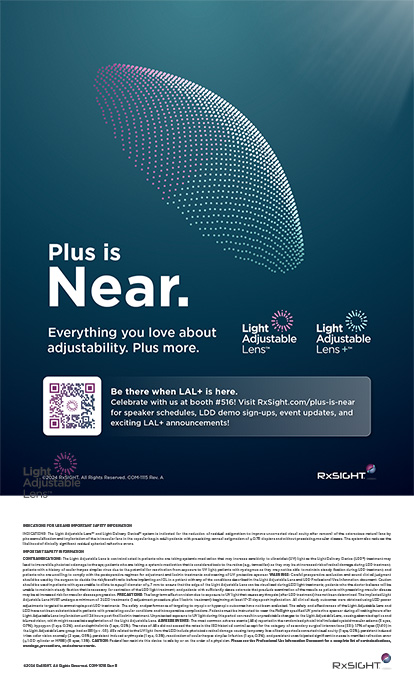
A couple of years ago, I took over a retiring doctor’s established solo medical ophthalmology practice in midtown Manhattan. He had been in practice in the same physical space for 40 years and employed a small, loyal staff. Although we were generationally different, we have a similar philosophy on the focus on patients and service. Because I am a cataract and refractive surgeon, my practice is quite different from the preexisting one, so I embarked on a journey to transform his former traditional, classic solo practice into a modern, high-tech, multiphysician office for today’s discerning patients.
AT A GLANCE
• Updating an existing office space can lead to happier staff, more efficiency, and even easier payment.
• One of the most challenging characteristics to change in a practice is the employees’ culture, expectations, and workflows, but changes in the physical space can help employees embrace cultural changes, too.
• Technology is key to streamlining operations, standing out as a leader in the field, and improving patients’ satisfaction.
• One benefit of creating a boutique practice is that patients are less likely to argue about not having their copay or deductible, just as they would not in an upscale restaurant or hotel.
STAFF AND CULTURE
One of the most difficult characteristics to change in a practice is the employees’ culture, expectations, and workflows. While the prior staff members were always professional and patient focused, I wanted to transform the practice to a higher level of customer service. Refractive surgeons are in the hospitality business, and I wanted that sense to permeate to all of our patients.
The waiting room was renamed the reception lounge, and some of the old signage was updated. Instead of, “Please do not use your cellphones in the waiting room,” we put out multiple chargers and free Wi-Fi. Instead of, “Please do not eat or drink in the waiting room,” we offer fresh coffee and chilled spring water to our patients.
These physical changes grew into cultural ones, and our reception and phone staff began to appreciate what we were trying to accomplish. When a patient calls in with an emergency, we get them right in. If someone has a special request, we find a way to say yes. If someone walks into the office and wants to be seen, we do not just send them home with a 1-month appointment; we give the person immediate options.
By adding optometrists and a part-time ophthalmologist, we increased the number of time slots and appointments available. When I am in the OR, our clinic is busy and still taking care of patients and emergencies. We strive for quick turnaround appointments for all of our patients. Over time, this patient-first approach has led to their being happy and satisfied, which, in turn, has reinforced the staff’s new hospitality-focused approach.
REVENUE CYCLE MANAGEMENT
Modern medicine is complex, and I am not talking about the actual clinical part. Unlike other service or hospitality sectors, which collect payment directly from their customers (ie, swiping a credit card), our third-party reimbursement system has evolved (or devolved) into a laborious and costly maze called revenue cycle management (RCM). RCM is the lifeblood of any practice that contracts with managed care and government payers and demands technological solutions.
After researching different practice management options, we brought in a modern cloud-based practice management system that could automate RCM. It enables us to optimize our schedule with automatic email and/or text appointment reminders rather than the monthly mailed postcards. By using smart technology to streamline the medical payment model, my staff can better focus on outstanding customer service.
PATIENTS’ EXPERIENCES
The digital revolution has made many of our experiences more seamless and frictionless, and consumer-based technologies in digital payment, transportation, travel, and online retail keep improving. We need to do the same for our patients at the doctor’s office.
We use the Yosi app (Yosi) to have patients register and complete their intake information before the visit—on their smartphones or in the reception lounge using tablets. The software is intuitive, fast, and universally lauded by our patients. We call it “auto complete for the doctor’s office.” It scans their ID and insurance cards and automatically prefills all of their demographics. Critical to RCM, the front desk staff can then do an immediate eligibility and benefits verification. Yosi also lets patients choose their referring physician and pharmacy information by automatically completing the corresponding phone numbers and addresses from its database.
While our patients are seated in the reception lounge, they can enjoy an informational, highly personalized, waiting room video (on mute with subtitles) that mixes educational videos from Patient Education Concepts with practice-specific video snippets of media appearances and mission trips.
For our cataract evaluations, patients are handed an iPad (Apple)-based educational program (CheckedUp; iDoc) that simply and effectively describes cataract surgery and its associated refractive options. The 8-minute program is interactive and collects information on whether the patient is interested in refractive cataract surgery. We have recently added a dry eye module that can be shown separately or incorporated into the cataract segment.
BEYE.COM FOR YOUR PRACTICE’S NEEDS

1. Mulpuru S. Brief: US online retail forecast: 2015 to 2020. April 2016. http://bit.ly/2bFd9x6. Accessed September 1, 2016.
CLINICAL TECHNOLOGY
To be a leading practice in ophthalmology, we believe that we must have the latest, no-compromise clinical technology. With the rise of patient-pay services such as premium cataract surgery, we have been able to invest in the critical anterior segment technology to offer our patients the best in class. Deciding on the right technology is critical.
When investing in a major diagnostic or other ophthalmic technology, I take a stepwise approach. First comes the literature-review phase. I read the available publications (both peer reviewed and not) about the technology. I also gather information online from the manufacturer and other sites. One useful online resource has been beye.com (see Beye.com for Your Practice’s Needs). On this digital marketplace and reviews portal, I can quickly get a look at many technologies in one space, read reviews, and actually click to purchase many items. For example, when considering a new autorefractor, one can view 56 different models in one place, including lesser-known brands from outside the United States.
Next, I talk to the sales representatives and/or industry insiders. I typically do this at the major national meetings or, better yet, at the regional meetings, where a local representative is actually manning the booth. Finally, I talk to colleagues who have already purchased it. If indicated, a site visit can really help me decide on a big-ticket item such as a femtosecond laser. Often, the company will allow an in-office trial period, which I found invaluable before purchasing TearScience’s Lipiflow and iOptics’ Cassini.
PHYSICAL OFFICE’S APPEARANCE
As I mentioned, my predecessor had been in this office space for 4 decades, with the most recent minor office renovations about 1 decade old. The space was neat and professional, but had an inefficient layout of rooms and a decor that was, well, not exactly my style. The older feel of the space had a Mad Men throwback look, which some millennials found appealing, iexcept that everything was well aged.
I knew the office needed updating, and I reviewed all my options: I considered moving to another space, doing a small cosmetic update of the current space, or doing a more significant “gut” renovation. For multiple reasons, I decided to stay in the familiar and conveniently located space. The biggest challenge was how to renovate the office without significantly affecting my busy practice. I interviewed several designers, contractors, and architects. When reviewing my wish list for the office, it became apparent that a sizable renovation of the interior walls, plumbing, information technology networking, electric, HVAC, ceiling, and bathrooms would be necessary.
I found an architect and contractor willing to take on the job with the caveat that it would be completed over a 12-day period while I was away on a preplanned vacation. I had some contingency plans to use another office if I needed to, but fortunately and despite a few construction hiccups, everything was completed mostly on time.
THE NEW OFFICE
The new, modern office has been physically and culturally transformational. Working in an open, bright environment has an invigorating effect on the doctors and staff. Through its minimalist, high-end, and well-thought-out design, the practice’s environment now echoes and reinforces the practice’s hospitality philosophy and high-tech affinities.
Patients’ comfort, attention, and flow have been optimized. Some of the changes included
• reconfiguration and addition of new digital examination lanes
• a new dry eye disease diagnostics and treatment room
• an elegant and professional patient consultation/surgical scheduling room
• an expanded and open reception area workspace
• a new design-focused reception lounge
• new information technology infrastructure, computers, and a telephone system that could scale with our growth
• enhanced employee pantry/kitchen with more space, amenities, and privacy
In effect, every square inch of the space was carefully considered and optimized for a boutique practice. Some of the intangible benefits included the positive change we saw in our patients. Walking into a new, modern office environment, most of our existing patients (even some of the grumpier ones) became generally upbeat and congenial. More surprisingly, the modern and high-tech office reduced payment collection issues at reception. We found that patients were less likely to argue about not having their copay or deductible, just as they would not in an upscale restaurant or hotel. Finally, patients left their visits happy, and word of mouth spread quickly.
SPECIALTY AREAS OF EXCELLENCE
As a boutique practice catering to both a medical and elective cash-pay patient population, we decided early on to focus and stand out in a few areas of excellence that straddle the two payment models: laser refractive cataract surgery and dry eye/ocular surface. We have taken a uncompromising stance to achieving outstanding outcomes for our patients in these (and other) specialties. With my new practice transition now beyond its initial phases, we are proud of our high-touch, high-tech, and high-outcomes approach and strive to continually grow and improve. n
Tal Raviv, MD
• founder and medical director, Eye Center of New York
• clinical associate professor of ophthalmology, New York Eye and Ear Infirmary of Mount Sinai, New York
• (212) 889-3550; talraviv@eyecenterofny.com; Twitter @TalRavivMD
• financial disclosure: an investor in Yosi


